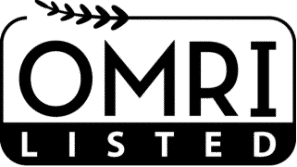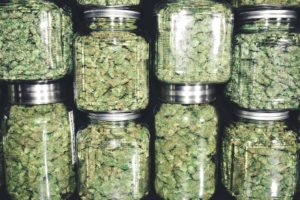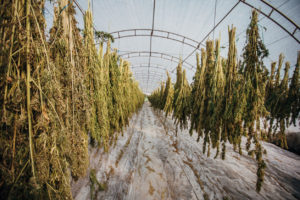by Ellis Smith, Co-Founder & Chief Development Officer American Cannabis Company
What is Integrated Pest Management or what commercial cannabis growers refer to as IPM?
Per Growers Network, “Integrated Pest Management (IPM) is the careful consideration of all available pest control techniques and subsequent integration of appropriate measures that discourage the development of pest populations and keep pesticides and other interventions to levels that are justified economically and reduce or minimize risks to human health and the environment. IPM emphasizes the growth of a healthy crop with the least possible disruption to agri-ecosystems and encourages natural pest control mechanisms.”
Everyone has a different approach to treating plants for pests and mold/mildew. The goal behind IPM is to consistently treat plants with a proactive approach versus waiting to treat plants until issues arise and in turn reactively scrambling to attempt to mitigate the outbreak.
Here are seven helpful plant management tips to ensure a strong IPM regiment.
1. Inspection
Immediately establish a routine scouting schedule for walking your grow and inspecting plants for signs of issues. It all starts with meaningful observation and careful inspection of your plants. Many of the insects you will be scouting for are nearly microscopic so a “jeweler’s loupe” or magnifying glass will be needed to complete a thorough visual inspection. The optimum time to scout is as soon as you arrive every day as this will give you time to address any issues that come to light.
2. Preventive Action
Preventative action in cannabis cultivation consists of a multi-faceted approach. Make certain your building envelope is tight with no leaks. Building leaks in a cannabis grow can account for the presence of pests and environmental differences/changes. Be sure to have anyone entering the grow area change clothing and shoes before entering. Failure to do this can result in an infestation as insects can be introduced by a clinging to a visitors’ clothing. Hair and beard nets are inexpensive and will help to ensure a cleaner growing environment. Cleanliness is key in a grow facility and you should treat your grow space like a constantly sanitized hospital operating room. The preventative action of maintaining a clean space can significantly reduce the need to use harmful pesticides.
3. Identification
Accurate pest identification is critical! You will have a difficult time managing your IPM without a high degree of accuracy in identifying insects and the problems can quickly multiply until it is out of control. Be sure to understand that the plant damage being observed is being caused by the pest(s) you are identifying.
4. Analysis
If you identify a problem in your canopy you must determine what is the root cause? Are staff and/or visitors bringing in pests from their own personal grows? Are there holes or openings to the outside that are allowing pests to be introduced into the cultivation rooms? Do you have inadequate environmental controls? Take a step back and look closely at plants. Quite simply put, analyze for success.
5. Treatment Selection
IPM emphasizes the use of non-chemical control methods. Our team prefers to use bio-controls or other insects and safer approaches to remove unwanted pests, mold and mildew. If you do experience problems in the removal of unwanted pests with these alternative uses, then chemical treatments can be introduced to help mitigate the issues on hand. Once outbreaks are under control you can return to utilizing less toxic alternative measures.
6. Monitoring
It is important to keep a close eye on your crop. Monitoring the success of treatments will keep you on top of your IPM game. Remember the preventative process requires a consistent proactive approach, as you will have an uphill battle trying to exterminate the problems once they do occur.
7. Documentation
Regulations are a major factor in what drives the success of the cannabis industry. Keeping concise and accurate logs of your pesticide use and storage will help ensure that the operation is in good standing with the state and city ordinances and laws. Regulators will be looking to inspect your records, so documentation is extremely important. Keep up to date with tracking and the documentation of how you treat the plants because Big Brother is always watching.
ConclusionThis is a very high level look at what IPM is and how to execute an effective plan. Be diligent with every process mentioned as this road map, when followed correctly, can help save you headaches as well as money. The key is to be proactive, not reactive, with your IPM program.
To learn more about IPM, checkout the following link to my Cannabis Tech webcast with our IPM business colleagues at urban-gro.
– Hollister & Blacksmith, Inc. –









